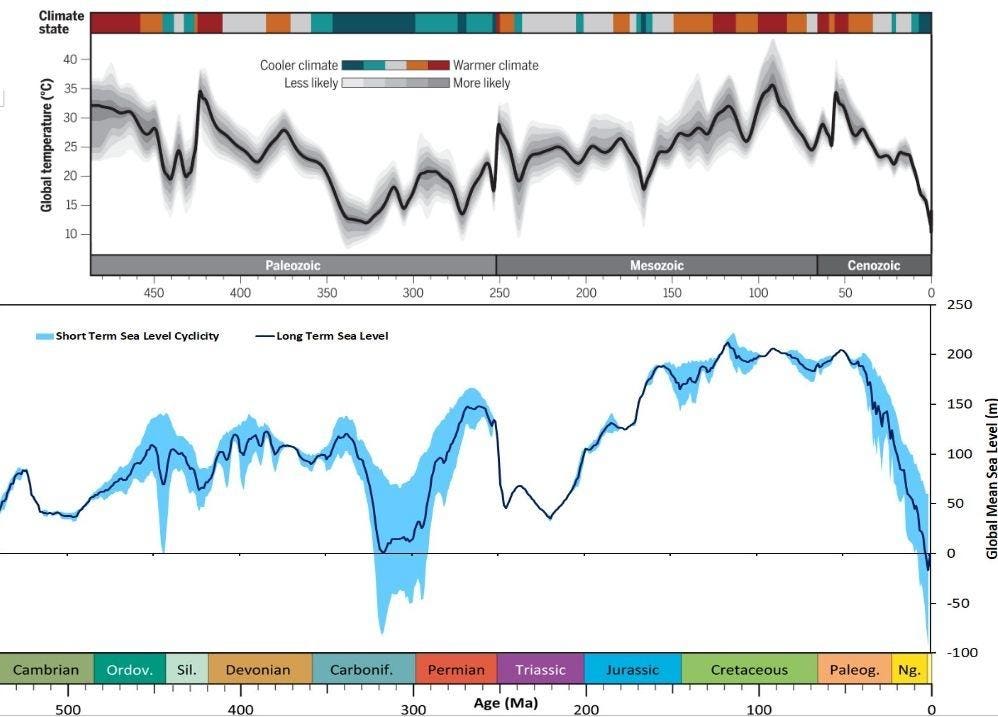Two recent studies provide an in-depth look at Earth’s climate and sea level changes over the past 540 million years.
The first study presents a climate curve showing significant fluctuations in Earth’s temperature, highlighting a strong correlation with atmospheric carbon dioxide levels. A team from Arizona, utilizing over 150,000 data points and 850 simulations, constructed an accurate temperature profile from the Hirunantian period (approximately 485 million years ago). Key findings indicate that the coldest period was the Kalu Ice Age (36-260 million years ago), whereas the warmest phases, like the "Cretaceous Greenhouse," saw global temperatures averaging between 25 and 36 degrees Celsius. Presently, the average global temperature is about 15 degrees Celsius, with increased greenhouse gas levels often linked to extreme heat periods.
The second study focuses on sea level changes, affected by plate tectonics and ice cap melt. It found that sea levels were low for the first 400 million years due to cool climates, with significant fluctuations during the Carboniferous period attributed to vast ice caps in Gondwana. The collapse of the Pangaea supercontinent during the Cretaceous dramatically raised sea levels, which exceeded today’s levels by over 200 meters. In contrast, the last two million years have seen multiple ice ages resulting in a drop of sea levels by up to 100 meters.
Together, these studies enhance our understanding of Earth’s climatic history and improve models for predicting future sea level rises due to climate change. The climate survey appears in Science, while the sea surface research is published in Earth and Planetary Science Letters.


